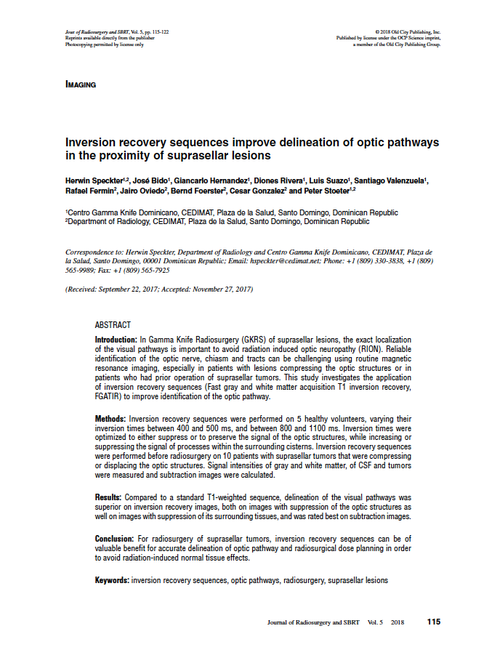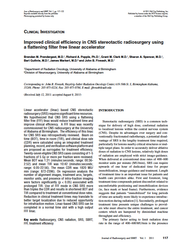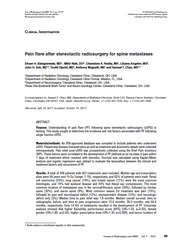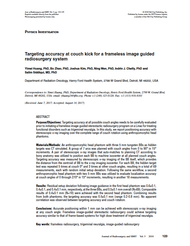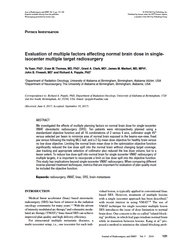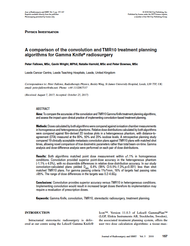- Home
- Journal Contents Downloads
- JRSBRT Downloads
- JRSBRT 5.2, p. 115-122
Product Description
Inversion recovery sequences improve delineation of optic pathways in the proximity of suprasellar lesions
Herwin Speckter, José Bido, Giancarlo Hernandez, Diones Rivera, Luis Suazo, Santiago Valenzuela, Rafael Fermin, Jairo Oviedo, Bernd Foerster, Cesar Gonzalez and Peter Stoeter
Introduction: In Gamma Knife Radiosurgery (GKRS) of suprasellar lesions, the exact localization of the visual pathways is important to avoid radiation induced optic neuropathy (RION). Reliable identification of the optic nerve, chiasm and tracts can be challenging using routine magnetic resonance imaging, especially in patients with lesions compressing the optic structures or in patients who had prior operation of suprasellar tumors. This study investigates the application of inversion recovery sequences (Fast gray and white matter acquisition T1 inversion recovery, FGATIR) to improve identification of the optic pathway.
Methods: Inversion recovery sequences were performed on 5 healthy volunteers, varying their inversion times between 400 and 500 ms, and between 800 and 1100 ms. Inversion times were optimized to either suppress or to preserve the signal of the optic structures, while increasing or suppressing the signal of processes within the surrounding cisterns. Inversion recovery sequences were performed before radiosurgery on 10 patients with suprasellar tumors that were compressing or displacing the optic structures. Signal intensities of gray and white matter, of CSF and tumors were measured and subtraction images were calculated.
Results: Compared to a standard T1-weighted sequence, delineation of the visual pathways was superior on inversion recovery images, both on images with suppression of the optic structures as well on images with suppression of its surrounding tissues, and was rated best on subtraction images.
Conclusion: For radiosurgery of suprasellar tumors, inversion recovery sequences can be of valuable benefit for accurate delineation of optic pathway and radiosurgical dose planning in order to avoid radiation-induced normal tissue effects.
Keywords: inversion recovery sequences, optic pathways, radiosurgery, suprasellar lesions
After payment has been processed for your order of a digital copy (PDF) of this article, you will see a download link on your completed order page and also receive an email containing a download link. The links, which will enable you to download one copy of the article, will expire after 24 hours.
 Loading... Please wait...
Loading... Please wait...

